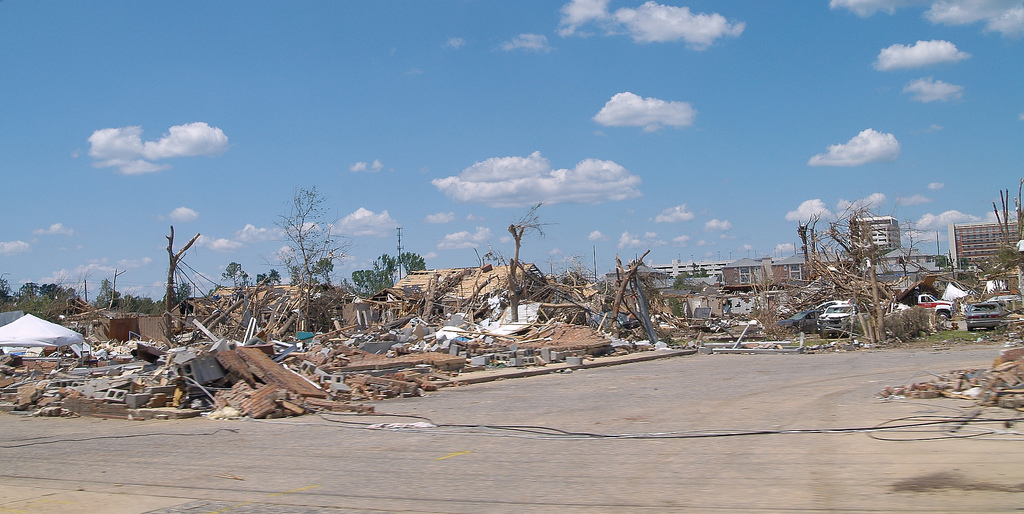Having grown up smack dab in the middle of Tornado Alley, my wife and I consistently have “Tornado Dreams.” Simply put, they involve being chased by or being inside a structure struck by a tornado. Tornado Dreams are a simple manifestation of growing up in an area plagued by violent weather. But the psychological effects of tornadoes can go much further.
The spring of 2011 brought one of the worst outbreaks of tornadoes, 1,170 confirmed, on record for the Midwestern, Southern, and Eastern United States. These tornadoes led to 552 deaths and $14 billion in total damages. April 27 had the most tornado-related fatalities in the United States in a single day since the “Tri-State” outbreak on March 18, 1925, when over 700 people were killed.
In this spring event, all the ingredients for a massive outbreak came together—powerful jet stream, abundant moisture, and a strong cold front. Unstable air had been moving across the US as part of an approaching cold front. This in itself would trigger strong storms. But a strong and deep jet stream drove from the north/northeast into the South with winds over 100 mph. At the same time, a surface low became strong creating moisture and winds from the south and southeast. The instability of this system and the wind shear produced were the perfect mixture for rotation and spawning of tornadoes.

Tornado damage of Tuscaloosa, Alabama took on April 27, 2011. Druid City Hospital is visible in the background. Photo by Pyrrhos Papadopoulos on Flickr (CC)
The worst of these tornadoes were the EF5 that hit Joplin, Missouri and EF4 that hit from Tuscaloosa to Birmingham, Alabama. The two tornados accounted for 222 deaths by themselves. A year later, a team of scientists assessed 2,000 adolescents in these areas for signs of major depressive episodes (MDE) and post-traumatic stress disorder (PTSD). Roughly 1 in 15 adolescents suffered from PTSD and 1 in 13 developed MDS. The incidence of both MDE and PTSD were higher in girls and older children. Unsurprisingly, both also occurred in greater frequency when a family member had been injured. However what occurred with great frequency, nearly 1/3 of the children surveyed was hyperarousal and re-experiencing. Hyperarousal is the state of tension produced by hormones released during the fight-or-flight reaction. Re-experiencing, as the name suggests, is reliving the moment.
For comparison sake 6.7% of the children in the survey met the criteria for PTSD. Estimates of PTSD among veterans of the most recent war ranges from 10-15%.
